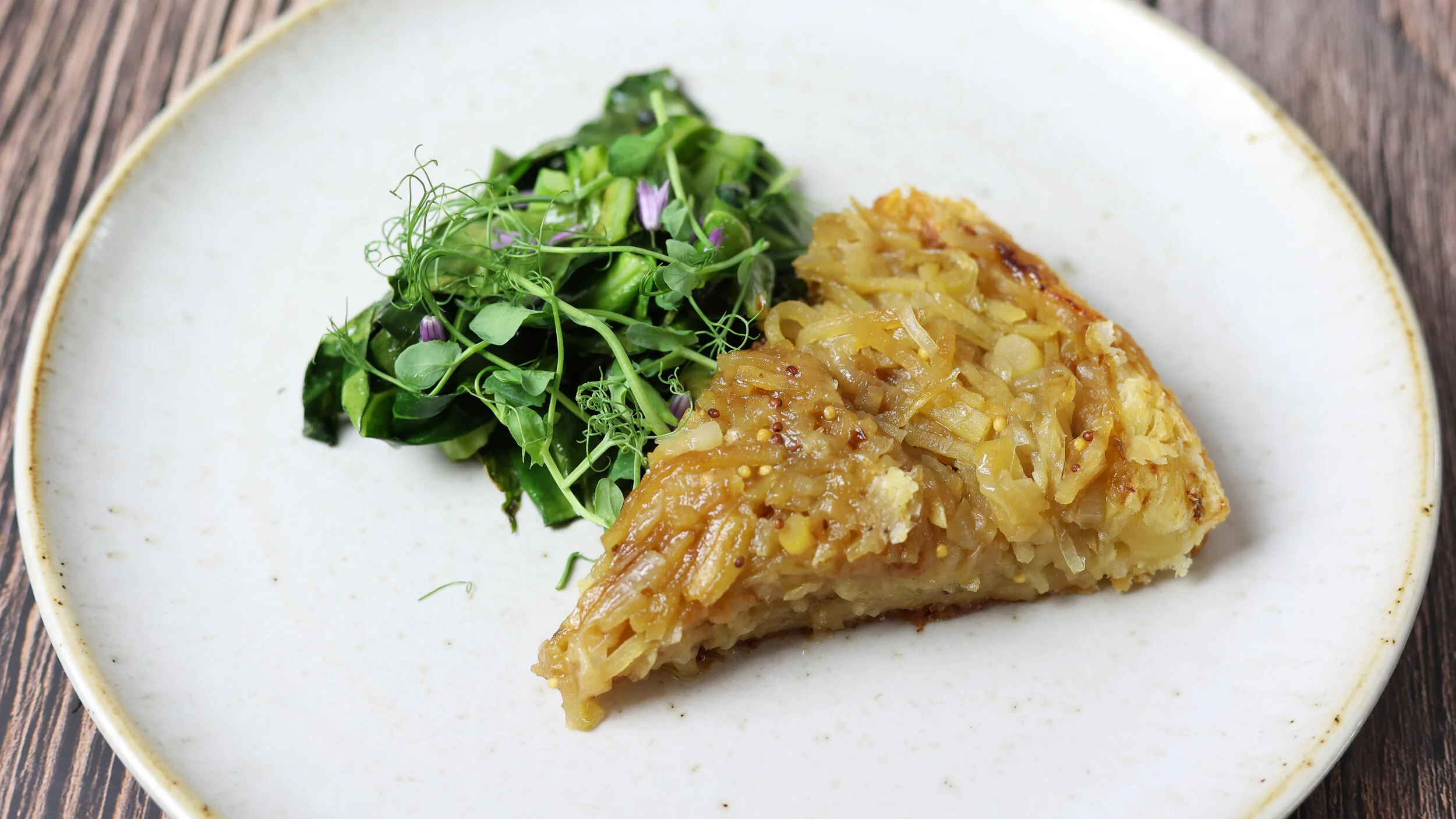Potato and White Onion Tarte Tatin
If I ever want to make something truly comforting, clad in pastry, and as easy as possible, savoury tarte tatin is the way to go. What makes them easier than the average tart or pie is the way they’re baked; upside down. All you need do is fry your ingredients in a dash of oil or butter, deglaze the pan, then tuck a sheet of puff pastry over the whole thing and pop it in the oven for half an hour. Then, tip it out onto a chopping board and feast! It’s a great way to make something lovely from leftovers too. For this recipe I have opted to keep it simple and serve it with a sautéed cabbage and pea shoot salad, but it works equally well with a cider jus or garlic mayonnaise if you fancy incorporating a sauce of some sort.
I also chose to Julienne the potato in order to increase it’s surface area to decrease cooking time and make the tarte lighter a less stodgy. If you’d prefer you can mandoline cut the potato and layer it like a dauphinoise or dice into round chucks that are roughly 2cm in size. If you opt for diced potato you will need to blanche them in hot salted water for 4 minutes to soften them before frying.
For the easy of this recipe, I suggest buying premade puff pastry. If you would like a blog post all about making puff pastry (vegan and otherwise) then please let me know in the comments below as I’m happy to write something up.
Potato and White Onion Tarte Tatin Recipe
Serves 5
4 White onions, cut thinly
1 Large potato, julienne
300g Puff pastry
2tsp Wholegrain mustard
30ml Moscatel sherry / sherry vinegar (depending on your sweet tooth)
1tsp Demerara sugar
2 Cloves of green garlic / 1 clove of garlic, thinly sliced
4 Cabbage leaves, roughly chopped
40ml Cooking oil
Seasoning
Step 1.
Begin by preheating the oven 190C / 375F whilst you thinly slice all 4 white onions. Place an oven proof frying pan on the hob over a medium high temperature then add the onion with 20ml of the oil, the sugar and seasoning. As it cooks, the onion will become translucent and release a lot of juice. Try not to disturb it too much by stirring as this will cause it to break up before it can caramelize. Keep the temperature high and the water will evaporate from the juices, leaving behind the concentrated onion sugars and trapping the aromatics and flavour in the oil and sugar.
Step 2.
As the onion cooks, prepare the potato however you see fit. If you don’t have the time or confidence to julienne, you could use a grater instead. Keep the prepped potato in a bowl of water to stop it discolouring.
When the onion starts to colour and crisp, turn the heat down to a medium temperature and add the potato with the remaining 20ml of oil. Depending on the time of year, potatoes can be more or less thirsty, absorbing the oil and juices in the pan. Keep half an eye on this as you prepare your pastry and add more oil if needed. The potato is ready for the next step when it begins to soften.
Step 3.
To prepare your pastry, weigh the block, then lightly dust the surface and rolling pin in flour. To create a circular piece of pastry, begin rolling directly in front of you and turn the pastry every 4-5 rolls by 1/8th. Rolling the same direction like this means you are far more likely to amply an even pressure to the pin (instead of turning the pin at some weird angle to your body). Turning the pastry by such small increments helps smooth out the angles of the square block whilst also ensuring the pastry has a chance to relax and unstick from the surface.
When rolled out to 2-3cm larger than the pan you’re cooking in, use a plate to cut out your circle and let it rest in the fridge for 10-30 minutes whilst you add the sherry to the frying pan.
Step 4.
Add the sherry or vinegar to the frying pan with the mustard and stir it in. Add the thinly sliced garlic too on top as this will steam whilst the tarte bakes. Lastly, remove the pan from the heat and lay the pastry over the ingredients. The key here is to know what you’re about to do and work quickly. Once the pastry starts to warm from the heat of the frying pan the fat in it will melt and touching it will ruin the pastry. So here are the next steps laid out simply:
Lay the pastry over the ingredients in line with the pan.
Quickly tuck the edge of the pastry down over the ingredients to form the edge of the tarte, pushing the ingredients under the pastry.
Place the whole pan in the oven and bake for 35-40 minutes.
This whole process should take you around 30 seconds.
Step 5.
When the tarte has 5 minutes left, clean and roughly chop up your cabbage and fry it in a pan with butter and a pinch of salt. As it begins to crisp, add a dash of cider vinegar and remove it from the heat. Add your pea shoots and chive flowers.
When the tarte comes out of the oven, carefully use a serving spoon or spatula to break the seal between the pastry and the pan. Place a chopping board over the tarte, then flip the whole thing out onto the chopping board. Serve with a dollop of garlic mayonnaise.
Further suggestions; why not try making a layer of chopped up spinach or sorrel over your ingredients before layering your pastry on top? This will then steam as the tarte bakes.



